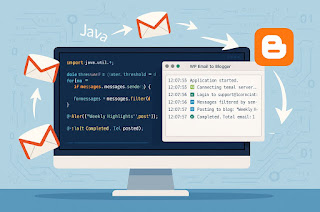Friday, August 30, 2024
Explain in detail about these tools Practice Q, RingCentral, LabCorp, AI scribes, Adobe, and other platforms used in clinical practice
Here’s a detailed explanation of each tool and platform you mentioned, along with their role in clinical practice:
### 1. **Practice Q**
- **Overview**: Practice Q is a comprehensive practice management software that helps medical practices manage their operations, including scheduling, billing, and patient management. It integrates with Electronic Health Records (EHR) and other healthcare systems to streamline clinical and administrative workflows.
- **Key Features**:
- **Appointment Scheduling**: Automates patient scheduling, reminders, and cancellations.
- **Billing and Claims Management**: Handles medical billing, insurance claims, and payment processing.
- **Patient Management**: Manages patient records, including demographics, medical history, and communication.
- **Reporting**: Provides analytics and reporting tools to track practice performance and financials.
### 2. **RingCentral**
- **Overview**: RingCentral is a cloud-based communication platform that offers voice, video, messaging, and collaboration tools. In clinical practice, it is often used for telemedicine, internal communication, and patient outreach.
- **Key Features**:
- **Telemedicine**: Enables secure video consultations between healthcare providers and patients.
- **Unified Communications**: Combines voice, video, messaging, and fax into a single platform, streamlining communication within the practice.
- **Call Routing and Management**: Provides advanced call handling features such as auto-attendants, call queues, and voicemail.
- **Integration**: Integrates with other healthcare systems and EHRs to enhance communication workflows.
### 3. **LabCorp**
- **Overview**: LabCorp is a leading laboratory testing company that provides a wide range of diagnostic services, including routine lab tests, specialized testing, and genetic screening. Clinical practices use LabCorp for lab orders, specimen collection, and result reporting.
- **Key Features**:
- **Lab Orders and Results**: Allows healthcare providers to order tests electronically and receive results directly into their EHR or practice management system.
- **Patient Access**: Provides patients with access to their lab results through an online portal.
- **Diagnostic Testing**: Offers a comprehensive menu of tests, including blood work, pathology, and molecular diagnostics.
- **Integration**: Integrates with practice management and EHR systems to streamline lab workflows.
### 4. **AI Scribes**
- **Overview**: AI scribes refer to software solutions that use artificial intelligence to automate medical documentation. These tools assist healthcare providers by transcribing patient interactions, generating clinical notes, and updating patient records in real-time.
- **Key Features**:
- **Speech Recognition**: Converts spoken language into text, capturing patient-provider interactions.
- **Real-time Documentation**: Automatically generates clinical notes during patient encounters, reducing the burden on providers.
- **EHR Integration**: Integrates with EHR systems to update patient records with minimal manual intervention.
- **Data Accuracy**: Employs natural language processing (NLP) to ensure the accuracy and context of the transcribed information.
### 5. **Adobe**
- **Overview**: Adobe offers a suite of software tools that are used in clinical practice for document management, electronic forms, and digital signatures. Adobe Acrobat and Adobe Sign are commonly used in healthcare settings.
- **Key Features**:
- **PDF Management**: Adobe Acrobat allows healthcare providers to create, edit, and manage PDF documents, including medical records, consent forms, and reports.
- **Electronic Signatures**: Adobe Sign enables secure, legally binding electronic signatures for consent forms, prescriptions, and other documents.
- **Form Creation**: Provides tools to create fillable electronic forms for patient intake, surveys, and feedback.
- **Security**: Ensures document security with encryption, password protection, and compliance with regulations like HIPAA.
### 6. **Other Platforms Used in Clinical Practice**
- **Electronic Health Records (EHR) Systems**:
- **Overview**: EHR systems are central to clinical practice, providing a digital version of patient charts and enabling the storage and retrieval of patient information. Examples include Epic, Cerner, and Allscripts.
- **Key Features**:
- **Patient Records**: Stores comprehensive patient information, including medical history, diagnoses, treatment plans, and lab results.
- **Interoperability**: Facilitates data exchange between different healthcare providers and systems.
- **Clinical Decision Support**: Offers tools to assist providers in making evidence-based decisions.
- **Regulatory Compliance**: Ensures that patient data management complies with healthcare regulations.
- **Telemedicine Platforms**:
- **Overview**: These platforms facilitate remote consultations between patients and healthcare providers. Examples include Doxy.me, Amwell, and Zoom for Healthcare.
- **Key Features**:
- **Video Consultations**: Provides secure, HIPAA-compliant video conferencing capabilities.
- **Patient Portals**: Allows patients to schedule appointments, view records, and communicate with providers online.
- **Integration**: Often integrates with EHR systems to sync patient information and records.
- **Practice Management Software**:
- **Overview**: These tools help manage the day-to-day operations of a medical practice, including scheduling, billing, and reporting. Examples include Athenahealth, NextGen, and Kareo.
- **Key Features**:
- **Appointment Scheduling**: Automates and optimizes patient scheduling.
- **Billing and Revenue Cycle Management**: Handles billing, claims submission, and payment processing.
- **Patient Communication**: Facilitates communication through reminders, notifications, and patient portals.
- **Analytics and Reporting**: Provides insights into practice performance, financials, and patient care quality.
### Conclusion
Each of these platforms plays a crucial role in modern clinical practice, supporting various aspects of patient care, administrative efficiency, and regulatory compliance. By integrating these systems through EDI and other technologies, healthcare providers can create a more connected, efficient, and patient-centered practice.
Subscribe to:
Post Comments (Atom)
Java Blogger API, Gmail Java Automation, Auto Post Emails to Blog, Blogger Java API, Gmail to Blogger Java, Blogger API Tutorial, Java Swing Email App, Email Automation Java, Jakarta Mail Java Example, Java Gmail Automation
Dears Good Day Recently, I have been working on a personal project, and I would like to share the implementation details regarding...

-
Inbound Flow: 1) The inbound, EDI data needs to be collected. 2) The collected data should be De-enveloped (removing the headers) to get t...
-
Sterling Integrator Administaration Related Interview Questions : ...
-
Encoding Conversion (From ISO8859_1 / ISO-8859_1 / ISO_8859_1 to UTF8 and vice versa) There is one service called “Encoding Conversion” in...




No comments:
Post a Comment